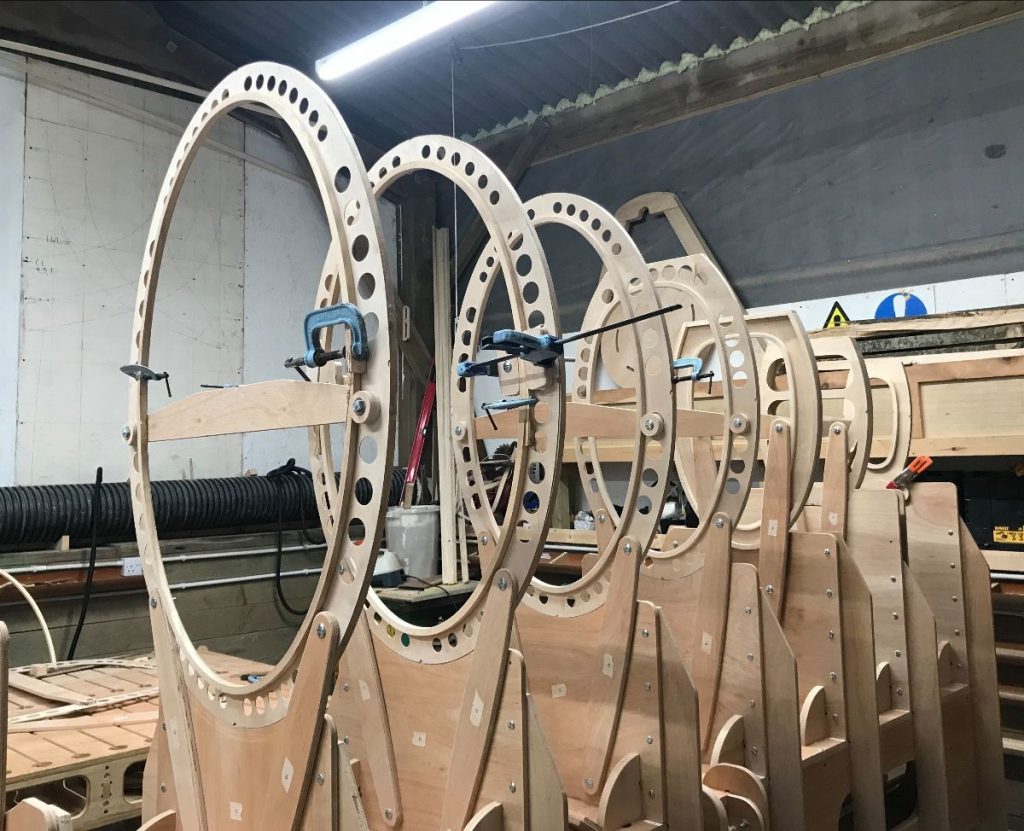The market for reproduction wooden vintage aircraft is not one that is likely to grow particularly over the next few years, but what there is a demand for is people with an ability to critically evaluate a process and manipulate materials using techniques that are novel. The industrial need to create shapes and objects has not diminished, and the field of rapid prototyping and reverse engineering is developing daily.
With the possible exception of mud, wood is the oldest construction material. Wood is a fascinating and diverse range of materials with properties that make it very attractive for building light, stiff and strong structures. Perhaps, therefore, it is worth asking what is new in the field of wooden structures. The answer to this would be technology; in particular, ways of cutting material and joining material.
The computer has led to a quiet revolution in the way that wooden objects are built. Traditionally wooden things were constructed using tools to manually measure, mark, cut, refine and join. In recent years computer numerically controlled cutting has been used to manufacture everything from fitted kitchens to children’s toys.
The need to reduce overheads, reduce the time to reach completion, lower the quantity and cost of waste and to improve the perceived quality of the product are the driving forces behind manufacturing. Ikea is a good example of the value of technology in industrial woodworking. However, this is not a need that the market doesn’t know it wants – the development curve is very clear.
An alternative way to look at what we are doing is in more general terms, examining the way in which this object is being created and the process that we are following to recreate the Panther. We can look at the Panther as being a vehicle for developing and enhancing techniques that could be used to build other large, lightweight structures. We can use this experience to develop a new evaluation of materials in the light of our experiences and to provide training and understanding of materials through practical experience and repetition with my trainee, El. Ultimately, it is unlikely that we will identify a need that the market wants until it knows what it wants.
El has found it very cold in the workshop recently. One would think she was from the South. We have been continuing to work through making frames and have nearly completed the transverse framework that makes up the tail end of the aircraft. We have refined our steaming technique to speed things up and have developed a system of master bending jigs that will create (nearly) universal shapes. We are beginning to see the aircraft taking shape now. (Images © Parnall Panther Project )






